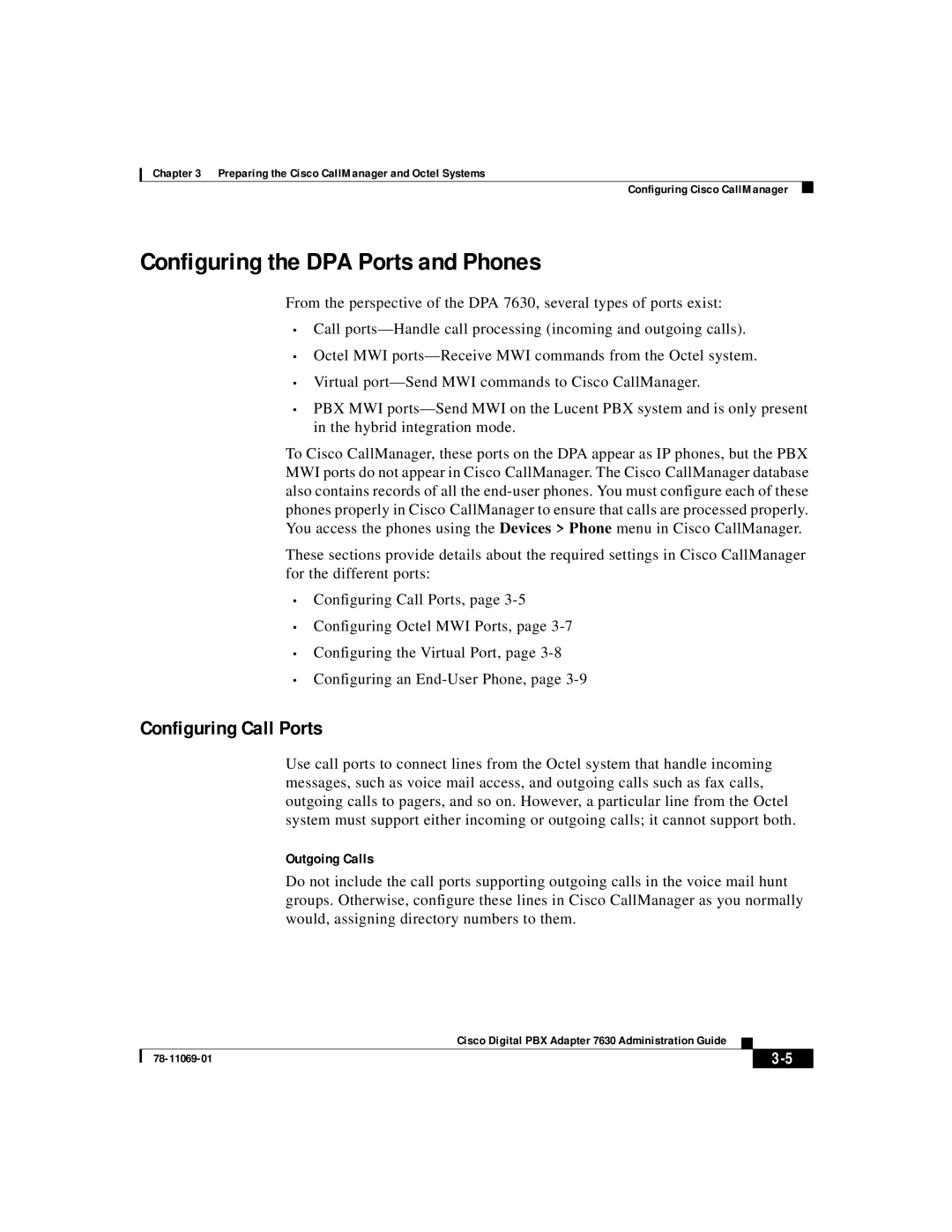Chapter 3 Preparing the Cisco CallManager and Octel Systems
Configuring Cisco CallManager
Configuring the DPA Ports and Phones
From the perspective of the DPA 7630, several types of ports exist:
•Call
•Octel MWI
•Virtual
•PBX MWI
To Cisco CallManager, these ports on the DPA appear as IP phones, but the PBX MWI ports do not appear in Cisco CallManager. The Cisco CallManager database also contains records of all the
These sections provide details about the required settings in Cisco CallManager for the different ports:
•Configuring Call Ports, page
•Configuring Octel MWI Ports, page
•Configuring the Virtual Port, page
•Configuring an
Configuring Call Ports
Use call ports to connect lines from the Octel system that handle incoming messages, such as voice mail access, and outgoing calls such as fax calls, outgoing calls to pagers, and so on. However, a particular line from the Octel system must support either incoming or outgoing calls; it cannot support both.
Outgoing Calls
Do not include the call ports supporting outgoing calls in the voice mail hunt groups. Otherwise, configure these lines in Cisco CallManager as you normally would, assigning directory numbers to them.
|
| Cisco Digital PBX Adapter 7630 Administration Guide |
|
|
|
|
| ||
|
|
| ||
|
|
|
